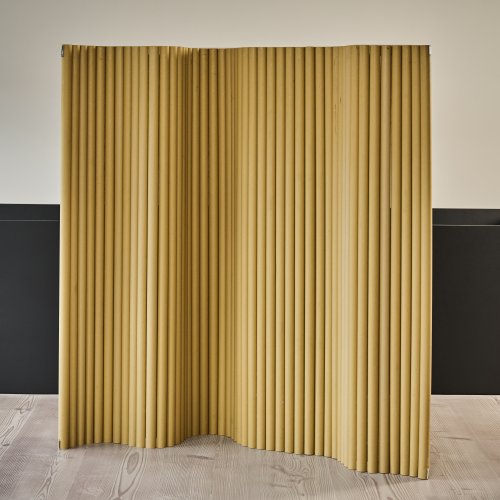Biography
Born in Tokyo in 1957, Shigeru Ban moved to the USA in the late 1970s to study at the Southern California Institute of Architecture. Ban showed a strong interest in architecture and design from an early age. In 1984, he graduated from the Cooper Union School of Architecture in New York City under the guidance of John Hejduk, a prominent member of the New York Five.
After returning to Japan, Ban worked briefly for the well-known architect Arata Isozaki before setting up his own architectural practice in Tokyo in 1985. In the early years of his career, he began experimenting with unconventional materials such as recycled paper and cardboard tubes. Instead of throwing away the empty cardboard tubes, Ban used them for his exhibition on Alvar Aalto. Ban was not only concerned with reducing costs, but also with the conscious use of resources. This philosophy and working technique ultimately enabled him to achieve his international breakthrough.
Ban became particularly well known for his ‘Paper Log Houses’, which he designed for the refugees of the Kobe earthquake in 1995. The emergency shelters represented a symbiosis of usability and ecological simplicity. Industrial cardboard tubes were used as load-bearing elements for the walls, while the floor was made from beer crates and the insulation material from sandbags. All materials were not only readily available locally, but also environmentally friendly and easy to recycle. The houses were ideal for use in disaster areas as they could be constructed quickly and without special tools.
Over the course of his career, Ban realised a number of significant projects that were both aesthetically impressive and functional. One of his most renowned works is the Centre Pompidou-Metz, which opened in 2010 and stands out with its striking, tent-like roof made of wood and glass. Another outstanding project is the ‘Cardboard Church’ in Christchurch, New Zealand, which was rebuilt as a temporary cathedral after the 2011 earthquake. The complex, designed for the Swatch Group, impresses with its flexible spatial concepts and green architecture.
His work reflects his conviction that good design should be accessible to all, regardless of the circumstances. This approach has not only earned him numerous awards, but also a special position in the international architecture scene, where he is known in particular for his humanitarian commitment.


